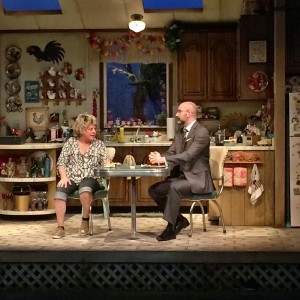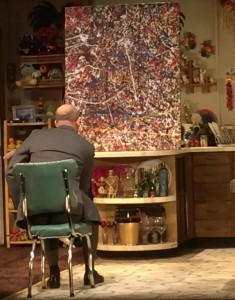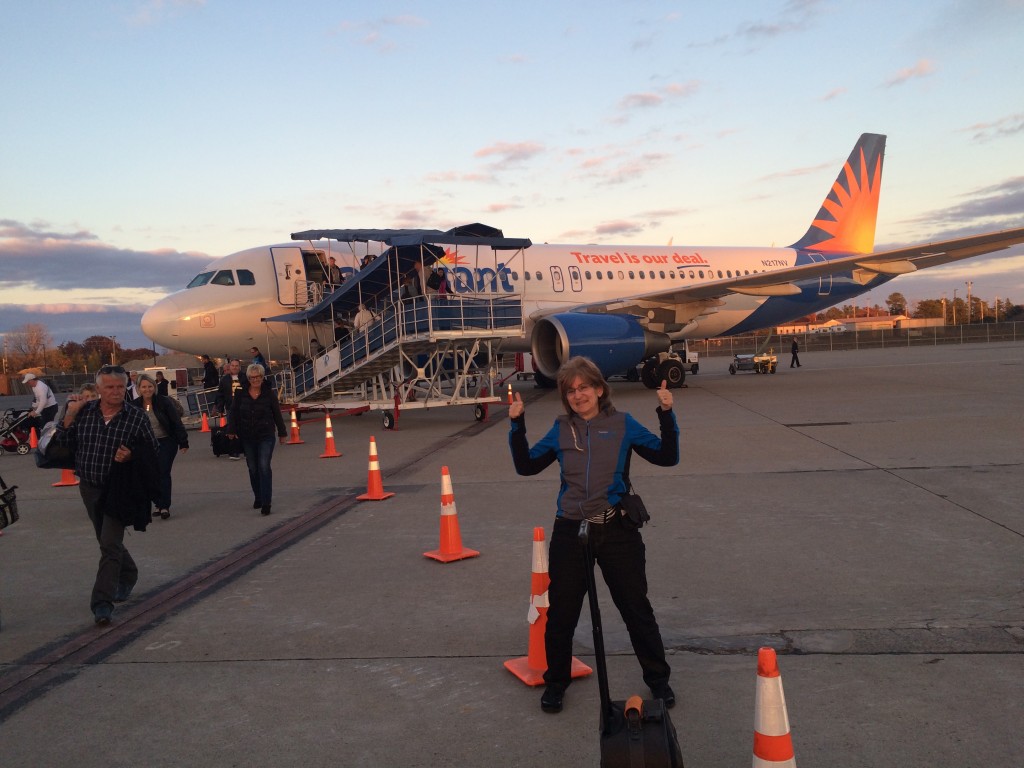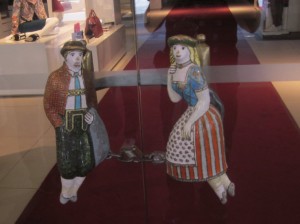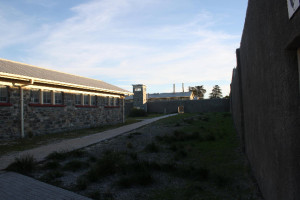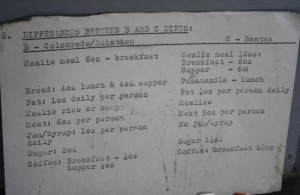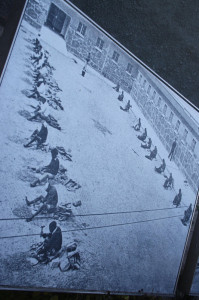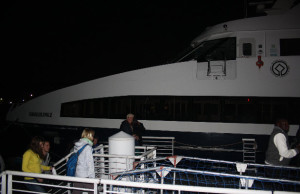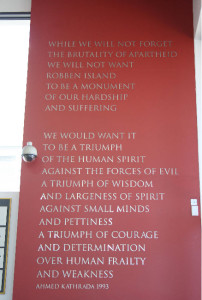Tag Archive
activity architecture art artist building Canada children city CostSaver downtown drive i-95 entertainment Europe event exhibit family festival Florida food fun historic History landmark local Museum music Nature New Zealand Ontario roadtrip sculpture Seattle show sights sightseeing tour tourist Trafalgar travel travelblogger view Washington Washington State water world
Canada: Sault Ste Marie, Ontario – Open da Door
Could not find a way to lock the bathroom door inside of the huge bathroom at Broers Jansen resto. Found this square on the wall with the message, “Door locked when red, Unlocked when green. Had to push the button to turn the lights on and off to lock and unlock. What happens in a power failure?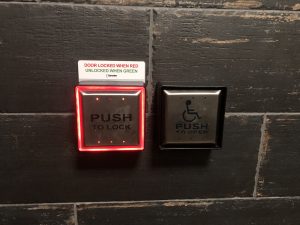
Italy, Florence: Florence’s Bronze Doors to the Gates of Paradise
Florence’s Baptistry of the Duomo is renowned for its three sets of artistically important bronze doors which have relief sculptures. The south doors were created by Andrea Pisano, and the north and east doors by Lorenzo Ghiberti.
It was Michelangelo who gave the East doors their fame, calling them “the Gates of Paradise”. The 17-foot-tall gilded doors, weighing 4 1/2 tons, are casts of the original doors created in Ghiberti’s 15th-century workshop.
The Italian poet Dante Alighieri and many other notable Renaissance figures, including members of the Medici family, were baptized in this baptistry.
US: Dedham, MA – New England Bear, Doll and Folk Art Show
The New England Bear, Doll & Folk Art Show is a 1 day event being held on April 8th, 2018 at the Holiday Inn Boston Dedham Htl & Conf Ctr in Dedham, MA.
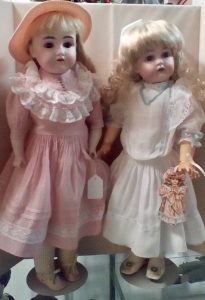 This eclectic and one-of-a-kind display showcases a spectacular selection of dolls, teddy bears and folk art including antique, collectible, fashion, Barbie, reborns & original artist dolls and bears from the 18th century to the 21st century.
This eclectic and one-of-a-kind display showcases a spectacular selection of dolls, teddy bears and folk art including antique, collectible, fashion, Barbie, reborns & original artist dolls and bears from the 18th century to the 21st century.
Also featured are a wide range of doll houses and miniatures based creations, plus vintage clothing & linens, furniture and doll parts, toys, American Girl clothing and much more. UFDC information table and door prizes.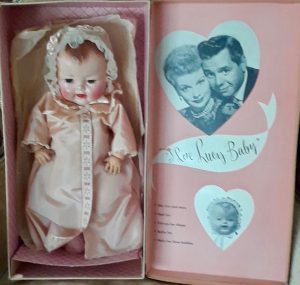
There will also be available identification, valuation, restringing and minor repairs.
Free Parking
Location: Holiday Inn Boston-Dedham, 55 Ariadne Rd, Dedham, MA 02026
Date: Sun, April 8, 2018
Time: 10am – 3pm
Tel: 603-969-1699
collinsgifts.com/events
For Regional Accommodation, Restaurants & Attraction: bostonusa.com
Canada – Montreal – Bakerfield Mist: Artsy Fartsy Tryst at Centaur
It is really hard to take the boring authenticity-proving side of the modern art world and make it into a delightful audience loving (2 standing ovations on opening night) theatre piece.
Stephen Sachs, the playwright, took on the true story of Terry Horton, a former truck driver who scavenged a painting for $5 at a second-hand shop as a gift for a friend who needed cheering up. Maude Gutman, as she is called in this play, is a lover of kitsch – her trailer is overwhelmed by it (A congratulatory shout out here for the jam-packed shelves created by set and costume designer Pam Johnson, who really needed my Smart Shopping Montreal book to find all that stuff!). At a yard sale, the local art teacher noticed the painting and mentioned it might be a Jackson Pollock; and so begins the tale. Somehow Gutman managed to get a major art house in NYC to send an expert over to check out her claim.
And therein lies this sparring pied-a-deux. A foul-mouthed bourbon drinking trailer park madam vs. the snooty elitist artsy gentleman. Human authenticity versus art authenticity is set to be proven. Nicola Cavendish walks the walk and talks the talk. Her sneaker grounded stalking moves her around the trailer while her expert verbal comedic timing keeps the pace going. She even manages to give the garbage pail “a line”.
Jonathan Monro (Lionel Percy), himself a renaissance man (competitive swimmer, piano prodigy, singer, director, lyricist, actor), glides around her, expertly dodging her verbal and physical attacks. My take-away forever (as a former NYC art teacher) is the exuberant and sexually suggestive way in which Monro teaches us the how and why a Jackson Pollock painting is important – and not just a bunch of paint splashes on a canvas.

Though Percy always trusts his “first blink”, it is Nicola Cavendish who summed it up brilliantly when she observed Pollock’s paintings, “You can see that what emerges is layers and layers and layers. I think it’s a lesson on how we can learn to look more closely, whether we are talking about a piece of art or whether we’re talking about the woman who lives across the street who’s offensive.” Modern art is beyond the understanding of the ordinary citizen, and this play opens the door a crack as to what it is all about, how it works and doesn’t work. The show makes it all fun and drives Maude’s trailer expertly to the end to find out if she goes from rags to riches.
Location: 453 St-Francois Xavier
corner: Notre-Dame
Tel: 514-288-3161
Dates: Jan 31-Feb 26, 2017
Prices $28- $51
www.centaurtheatre.com
Metro: Place d’Armes
US: Easy and Inexpensive Flying Allegiant Air
Wouldn’t it be amazing to be able to flashback to calm and pleasant airline travel of the 1970’s? Well you can! We just drove from Montreal to tiny Plattsburgh Airport to take Allegiant Air to hot sunny Florida. Easily, we turned off the main road, and drove right up to the airport door. I stepped out with the luggage, and Stan just parked the car across the street.
There was NO line at the Allegiant Air desk and friendly helpful service, I was done in under two minutes. There was NO lineup at security. Since you already drove through the border, there was NO customs and immigration to deal with. In probably about 5 minutes we were going up the elevator to the waiting room.
The room had a retro counter with a man selling candy, snacks, sandwiches and drinks. When I asked him the prices, He said, “What do you want, they’re all in my head?”
There weren’t overhead screens to keep track of the flight. They send any changes to you to your cellphone – and call if necessary, too. The building is going through a renovation so things might be a bit more twenty-first century when you fly.
Those of you already planning your winter sunny getaways will be happy to know that Allegiant Air flying out of Plattsburgh offers low prices with just a short drive away for Montrealers who want a nonstop flight to sunshine. Just be advised that there are extra charges for luggage (even carry-on), choosing seats, and such things as printed boarding passes for you (you can do it at home for free).
Travelers who shop around will find substantial savings when flying with Allegiant, as well as good deals on hotels, rental cars and attractions. Montrealers wishing to spend their hard-earned dollars at their destination, rather than on transportation, can fly to sunny Las Vegas and Florida.
Germany: Munich’s Door Handles
When you’re walking around Munich, make sure to notice their great door handles. The city is known for them.
South Africa: Visiting Robben Island, UNESCO World Heritage Site
By Adele Shapiro – March 2012.
As a child I used to visit Robben Island with my grandmother. Her son, my uncle, was a warder in the prison services there. The name “Robben”, despite sounding very English – is in fact the Dutch for “Seal” – and the name derives from the extensive seal colony that was found on the Island by the first Dutch settlers.
We would go to the Cape Town docks and from there, take a boat ride to the island, where we would spend the day with family. I was vaguely aware that there were bad people on the island, and that it was a prison…. but little did I know then of the role it was to play in South Africa’s later history. Years passed and now as an ad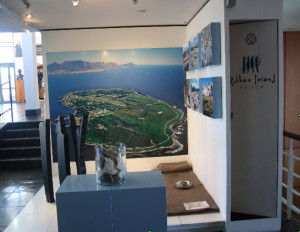 ult, I found myself revisiting the place where “the bad people” were kept, only now I realized that some were not so bad after all.
ult, I found myself revisiting the place where “the bad people” were kept, only now I realized that some were not so bad after all.
I bought a ticket for the tour some days before the trip, (advisable, as they fill up quickly) and took time out to examine the display at the Nelson Mandela Gateway at the V&A Waterfront in Cape Town.
There were many photographs of the political dissidents, the calls for boycotts, the anti-apartheid marches and there was also a prison cell that had been reconstructed for the purposes of the exhibit. I strongly recommend a visit to this exhibit before going to the island as it helps to contextualize the experience.
The trip began, as in times of old, with a boat ride from Cape Town docks, but this time instead of my uncle meeting us, we had a pleasant tour guide who told us jokes on our bus trip, whilst pointing out various sights on the island. Our bus was parked under a sign that said: “Welcome. We serve with pride.” I wondered if that sign had been there when Robben Island had been a prison as it was so sharply incongruous to the environment. I hoped not.
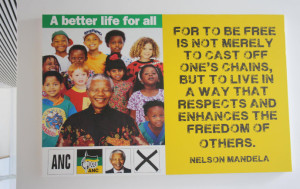 Robben Island has had a long history. First as a lighthouse to warn ships of the VOC, the Dutch East India Company (Verenigde Oostindische Compagnie), of the rocks that surround the island. But since the end of the 17th century, Robben Island has been used for the isolation of (mainly) political prisoners. The island was also used at various times as an animal quarantine station, a home for slaves, a leper colony, a hospital for the mentally ill and as a prison for French Vichy prisoners of war.
Robben Island has had a long history. First as a lighthouse to warn ships of the VOC, the Dutch East India Company (Verenigde Oostindische Compagnie), of the rocks that surround the island. But since the end of the 17th century, Robben Island has been used for the isolation of (mainly) political prisoners. The island was also used at various times as an animal quarantine station, a home for slaves, a leper colony, a hospital for the mentally ill and as a prison for French Vichy prisoners of war.
First we saw the Leper Graveyard and then house where Robert Sobukwe (Founder of the Pan Africanist Congress) had been kept separate from the other political dissidents.
It seems that Robert Sobukwe had special status in the prison. He was kept in solitary confinement at all times, but allowed certain privileges including access to books, being permitted to study, being permitted to wear civilian clothes, and being permitted bread. His children were allowed to visit him and they had their own bedroom in his “house”. Robert Sobukwe was convicted of incitement for demonstrating against and defying the Pass Laws, and in particular, for his connection to the PAC demonstration (although he was not present) which became known as the Sharpeville Massacre.
The notorious Pass Laws required black people to carry a pass book at all times when outside their compounds or designated areas, and were designed to limit severely the movements of the non-white population. This legislation was one of the dominant features of the country’s apartheid system.
Sobukwe was sentenced to three years in prison. After serving his sentence, he was moved to Robben Island for internment, as a new law called the General Law Amendment Act had been passed, which permitted his imprisonment to be renewed annually at the discretion of the Minister of Justice. This procedure became known as the “Sobukwe clause” and Robert Sobukwe was the only person whose imprisonment was extended under this clause. Imagine how special one has to be in order for parliament to pass a law just for you!
We also learned from our tour guide that the American politician and Pastor, Andrew Young, had fostered Sobukwe’s children in the USA, while Sobukwe had been in prison.
Our tour continued to the lime quarry where the political prisoners had worked. At the entrance to the quarry we saw a small cairn, and learned its history. In February 1995, (the landmark change of government was in 1994), about one thousand former political prisoners gathered again on Robben Island, but this time as free men, and to mark the occasion, each one placed a small stone from the quarry in a pile, making a small memorial to their years of hardship and struggle.
As we continued on our bus ride, we were shown a church, a hospital, a school and a mosque, and realized that far beyond our expectations, the island had supported a whole community. We duly arrived at the prison and tumbled out of the bus for our tour of “the real thing”. We were excited and filled with high spirits and I wondered for a moment where my heart would have been had I not been a tourist.
Inside we found grey walls. It was cool at midday; it was clear that at midnight it would be very cold. The communal cells were large and each had a bathroom attached.
Here we met our prison tour guide, Derrick Basson, a former political prisoner who served time on Robben Island for sabotage.
Derrick was very patient, humble and remarkably, not bitter. He answered all the insensitive questions calmly and without anger. In addition he explained the grading of the prisoners by race and also the diets that varied due to the racial classification of each prisoner. One of the curious facts he told us was that black prisoners were not given bread. As they were Africans their “natural” food was considered to be maize meal. The mixed race prisoners were allowed bread as they were considered to be more western or European and less African. The black Africans were also not allowed jam or syrup. I suppose you do not need jam if you have no bread.
Then I remembered that Robert Sobukwe, in spite of being black, was allowed to have bread, and it struck me that this must have been because he had been a university professor, and since this is a very “European” and non-tribal job, maybe he was considered eligible to receive bread.
Derrick further explained how prisoners slept on mats on the floor and how 5 blankets had not been enough to keep them warm at night. I suddenly remembered an interview with a former Alcatraz inmate who spoke of the extreme cold and of how prisoners had learned to sleep with only their elbows and knees touching the floor, hands locked behind the head. I became very grateful for my duvet.
We were told that in the beginning the political prisoners had been kept with the ordinary criminals, but later on, they were, thankfully, given their own “wing” and kept together. They came to call this place “The University” as they learned many things from each other and many of them also obtained degrees while in prison.
Derrick then took us to a yard where the prisoners had chopped rocks and turned them into stones, day after day in the sun. They were told that these rocks were used for roads built on the island, but no one seemed to know if this was true or not.
We were then taken to Nelson Mandela’s cell. Mandela was a militant anti-apartheid activist, as well as the co-founder and leader of the armed wing of the African National Congress (ANC), Umkhonto we Sizwe or “Spear of the Nation”. He was arrested in 1962 and convicted of sabotage, (amongst other charges), after he admitted to manufacturing explosives and acts of public violence, and was sentenced to life imprisonment. Mandela served 27 years in prison, 18 of these on Robben Island. After his release, he served as President of South Africa from 1994 to 1999.
My very first impression was of how small the cell was. No, not small, tiny. And then I thought that at least he could stand up and lie down in it, but not much more than that. At least it was larger than the dreadful box that I had heard was used in China. But there was no toilet. Just a metal bucket with a lid. At least a lid. And no tap, so no water. And if you are thirsty during the night, what should you do? And of course there was no electrical socket and no radio nor TV. And all I could think of was 27 years. TWENTY SEVEN YEARS! There was no door handle on the inside. The door was only operational from the outside, not unlike a cage. I remembered that Nelson Mandela had once remarked that the hardest and most traumatic experience he endured whilst on Robben Island for all those years was that he never ever saw, or even heard, a child. Can you imagine that? Now he insists on being photographed with children, whenever possible.
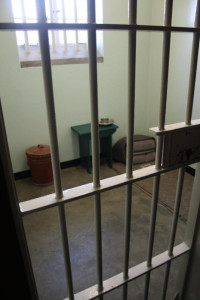 And then it was all over. We walked out to the yard, Derrick took us to the exit, and we said our goodbyes.I felt an odd mixture of elation and depression. Very happy that I had been to a UNESCO World Heritage Site of such importance, happier still that it was no longer a prison, and most happy that I was leaving. Yet also depressed and ashamed because of the suffering this place represented.
And then it was all over. We walked out to the yard, Derrick took us to the exit, and we said our goodbyes.I felt an odd mixture of elation and depression. Very happy that I had been to a UNESCO World Heritage Site of such importance, happier still that it was no longer a prison, and most happy that I was leaving. Yet also depressed and ashamed because of the suffering this place represented.
Duly subdued, we gratefully returned to our boat to ponder our feelings of inspiration and shock, enjoy the beautiful sunset cruise back to Cape Town, and watch a school of dolphins at play in the sea.
Remember when planning a visit to Robben Island, that the tours don’t always run on time. There was no snack bar on the boat. Our boat was 1 hour late in leaving Cape Town harbour and then we were rushed through our tour, which was a pity as there was too little time for questions.
A suggestion would be to make no appointments after the visit as the timing can vary, and also, take a snack pack. A sun hat and sun block are also good ideas.
Ferries depart (supposedly) at 9am, 11am, 1pm and 3pm, weather permitting, from Nelson Mandela Gateway, at the V&A Waterfront in Cape Town. Tickets costs are R230 for adults and R120 for children (U/18). Telephone: +27 (0)21 413 4200
Fax: +27 (0)21 419 1057

